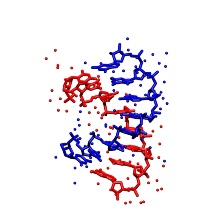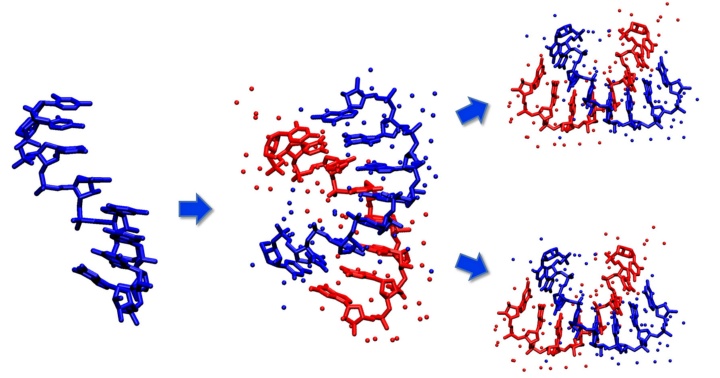A new Collaborative Research Center (SFB) TRR 392 “Molecular Evolution in Prebiotic Environments” is starting at the Ludwig Maximilian University of Munich (LMU) in cooperation with the Technical University of Munich (TUM) and the University of Stuttgart. Its research focuses on the very first steps in the evolution of life on earth. This involves the question of how molecules evolve in a prebiotic world and how they produced the first biological information in sequence form.
From a simple molecule to a complex organism
“It’s about the very early steps in evolution,” says Professor Clemens Richert from the Institute of Organic Chemistry (IOC) at the University of Stuttgart. “We want to know how molecules self-organized in the very early phase of earth’s history without the support of biological machines such as enzymes or ribozymes.” The aim of the research is to find out how the first genetically encoded molecules developed from these simple organic molecules, how the genetic information was passed on to the respective filial generation, and how self-replicating systems could thus have developed step by step in the course of evolution.
Defining the conditions for early life
The projects within the framework of the SFB are dedicated, among other things, to the question of what chemical, physical, and geological conditions are required in order to trigger the molecular evolution of ribonucleic acids (RNA) - the carriers of the genetic material - and thus create and preserve initial genetic information. In addition, the researchers want to develop novel bioorganic approaches to allow molecular evolution to run autonomously in a synthetic system. The experiments are also intended to shed light on how the conditions for early life on other planets could be defined.
Spontaneous replication of the RNA?
Within the framework of the subproject “Enzyme-Free Replication of RNA Sequences”, the research team from the University of Stuttgart is investigating whether RNA strands could have replicated spontaneously in the early phase of evolution, i.e. whether they form complementary strands on their own that are a molecular copy of the original sequence. “Replication is a particularly fascinating process, because it not only creates a particularly aesthetic structure, but also because it‘s the symbol of life. Being able to watch this process at the molecular level is something special,” Richert points out.
About the Collaborative Research Center / Transregio 392
The German Research Foundation (DFG) is funding the (SFB) TRR for four years. Under the leadership of the Ludwig Maximilian University of Munich (LMU), the following universities and research institutions are involved: the Technical University of Munich (TUM) as a co-applicant, the University of Stuttgart, Heidelberg University, the University of Augsburg, the University of Würzburg, TU Dortmund University, and the Max Planck Institute of Biochemistry (MPIB). The SFB pools expert knowledge from various disciplines, including earth sciences, chemistry, astrophysics, biophysics, and biochemistry.



